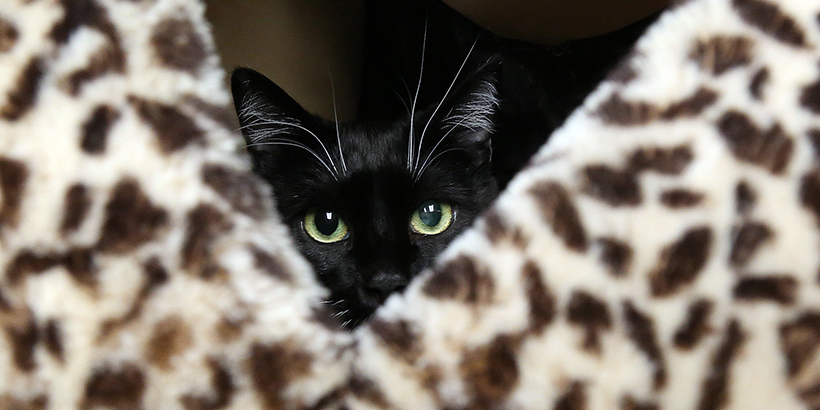
When a pet is adopted into a new home, they’ll need time to adjust. The shyer the cat, the longer that adjustment time tends to be. Sometimes families bring shy cats back to a shelter because they believe their new cat is unhappy. Often it’s just a case of the cat needing more time to settle in.
Here are some ways to make a shy cat’s transition into their new home a little easier:
Limit Space
Your cat can feel overwhelmed if you let them roam the while house during in first days home. Build their confidence by getting them used to one room at a time. Cats are cautious by nature and tend to look for protection and comfort in places where they can fully or partially hide. Once accustomed to sights and sounds in the new space, they will begin to venture out.
Choose Their First Room Carefully
Often, the first room a cat gets to see is the bedroom. But a shy cat is likely to hide under the bed where you can’t touch them and work on building a bond. A bathroom has fewer places to hide, and because the bathroom is usually small, they’ll likely feel safer. As long as there is a soft bed, a litter box and food and water, they won’t mind settling into their new home by starting in the bathroom. Also, make sure there are no holes in walls, inside cabinets, or ceilings. Cats will enter those spaces and could become stuck or lost in the walls or ceilings of your home.
Food
Food can help win over a shy cat. Sit down next to them and offer their meal on a spoon or long handled wand. Do this 2-3x/day and make sure all other food is picked up when you’re not around (no free-feeding). This ensures that they’ll be hungry enough for your sessions and associate YOU with food (i.e. their new favorite person!).
Slow Introductions
Let the cat meet each person in the home one at a time so they can get used to each person’s smell and voice. Remember when you’re around the cat, move slowly and talk quietly – sudden movements and noises can startle them. Let them smell the person’s hands first if they seem interested but don’t force any interaction. Let the cat come to you and set the pace.
Specific Toys
For some cats, playing can help decrease nervous energy. However, toys with noisy jingly bells or huge feather toys flying close to their face can make a shy cat panic. Shy cats generally prefer to play with quiet balls, laser lights or soft furry mice at first, and they’d prefer to sneak up on feather toys and attack them, instead of having the feathers chase them!
Additional Help
Try spraying Feliway on the cat’s bed to relax them or installing a Feliway diffuser. Feliway is a product that contains a synthetic version of feline facial pheromones. Even though humans can’t smell it, cats certainly can! It’s like feline aromatherapy, and the scent makes a shy cat feel more comfortable. Please refer to package directions for proper use.
Preparing For Veterinary Appointments
Prepare in advance for any veterinary appointments by serving food in your cat carrier for a week or so before the appointment. On appointment day, wait for the cat to go in and close the door. Don’t try to rush the cat by picking them up too quickly, as this may set them back. Encourage them to go into the carrier with food rather than force. Or better yet, keep the carrier around all the time with a comfy bed inside so your cat can come and go at their leisure.
Please allow at least 3 months for your shy cat to adjust, but be mindful that others may need a little extra adjustment time. Your cat appreciates your patience. Know that with time, kitty will give you all the love they have!

